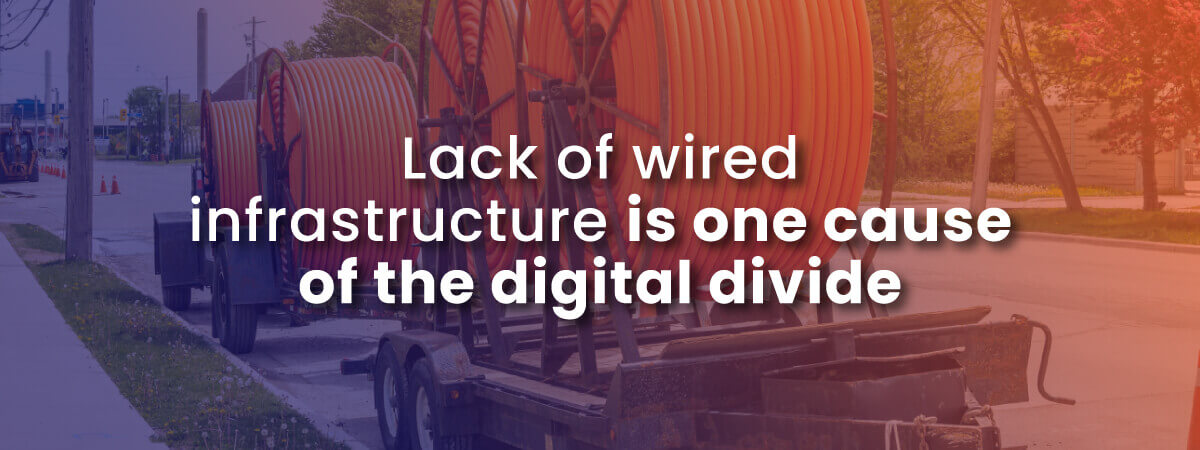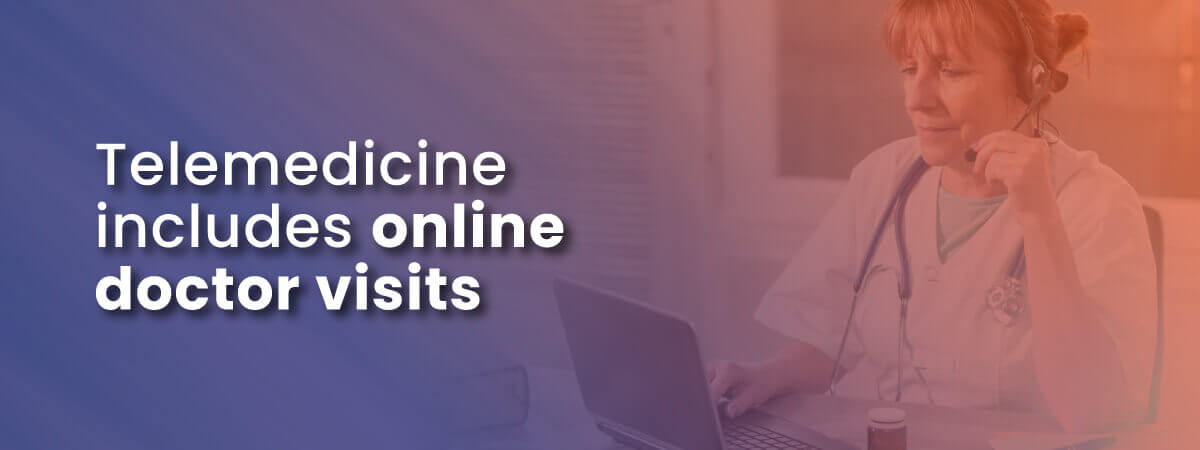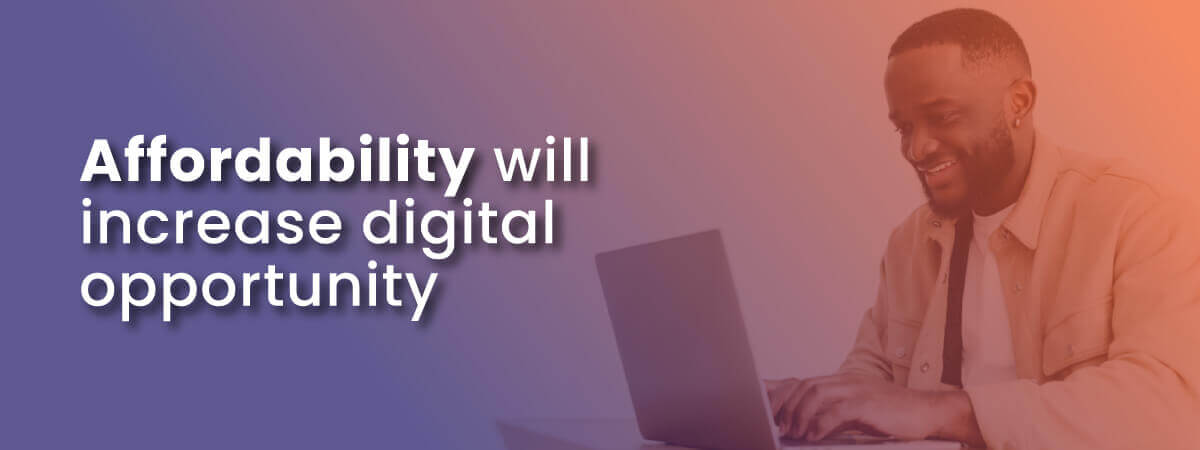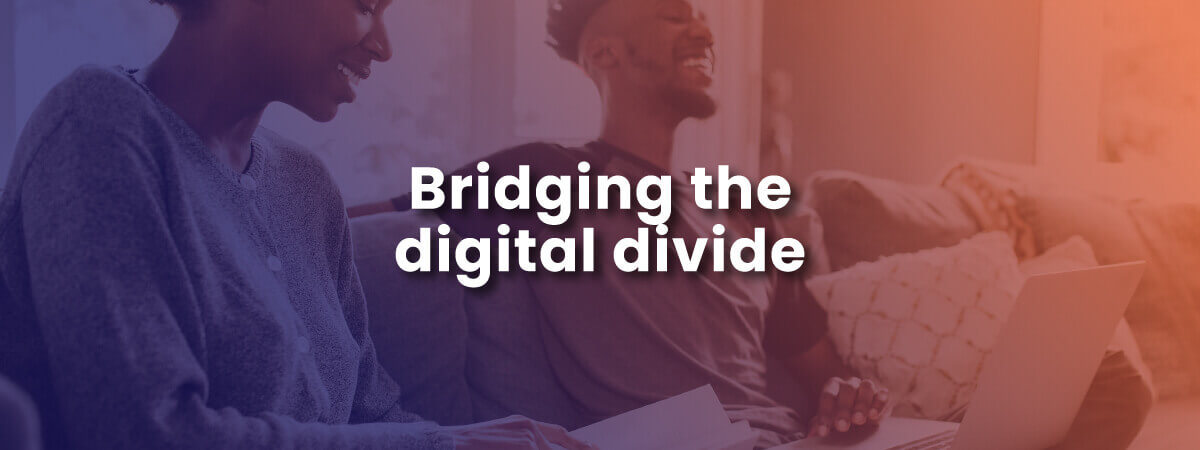How the Affordable Connectivity Program Can Bridge the Digital Divide
Table of Contents
In today’s digital age, access to high-speed internet is not a luxury but a necessity. The internet has become an essential tool for communication, education, business, and healthcare.
Unfortunately, many households in the United States lack access to high-speed internet, especially households in low-income communities.
People who don’t have fast, reliable home internet suffer from lack of access to online education, job opportunities, information and more. This opportunity gap is known as the “digital divide.”
To close the gap, the Federal Communications Commission (FCC) has introduced the Affordable Connectivity Program (ACP), a $14.2 billion initiative to provide high-speed internet to low-income households.
In this article, find out how the Affordable Connectivity Program can bridge the digital divide and build a better future for many Americans.
Understanding the Digital Divide
The digital divide refers in its simplest sense to those who have internet access and those who don’t. But the digital divide is not just about access to the internet. It also refers to the ability to use technology to its fullest potential.
People who have no reliable internet access may be unable to learn to use online tools for work, education, healthcare, and other crucial activities. Here’s a helpful video explaining the digital divide.
Causes of the digital divide
Infrastructure
One major cause of the digital divide is the lack of infrastructure in certain areas. Rural communities, for example, may not have access to high-speed internet due to the high cost of building and maintaining broadband infrastructure in sparsely populated areas.
Cost
The cost of internet access is another barrier for many people. Low-income households may not be able to afford high-speed internet, and that can limit their access to online opportunities.
Digital Literacy
Another cause of the digital divide is a lack of digital literacy. People who are not familiar with technology may not know how to use the internet to its full potential. Lacking home internet makes the problem worse, as people then have less opportunity to develop their digital skills.

Who is most affected by the digital divide?
The digital divide affects people of all ages, races, and backgrounds. But the people who are most affected are often the most vulnerable members of our society.
Low-income households, rural communities, and people with disabilities are more likely to lack access to high-speed internet. Elderly individuals may struggle with using technology or may not have access to the internet at all.
High-speed Internet: Portal to Opportunity
High-speed internet is a necessity in 21st-century America, now that so many aspects of our lives have moved online. The term “high-speed internet" refers to internet connections with speeds of at least 25 Mbps download/3 Mbps upload. These speeds allow for seamless streaming of videos, fast downloads, and efficient communication.
Here are some of the vital activities that rely on a high-speed home internet connection.
- K-12 Education: High-speed internet is now essential for K-12 schooling. Students often need the internet to do homework and access online resources. Teacher communication may take place online through Zoom or chat. Students who lack access to high-speed internet may fall behind in their studies.
- Adult Education: Adults can now enroll in thousands of online degree programs and online career training certificates. Many of these programs are free or low-cost, especially compared to traditional university study. Without high-speed internet, many people will not have the opportunity to advance their education and career prospects.
- Job Applications and Employment: Many employers now require online applications, virtual interviews, and/or remote work. Job seekers without reliable home internet will find it difficult to pursue new job opportunities online. Remote jobs will also not be available to people without broadband. For most work-from-home jobs, workers need a reliable internet connection with a certain minimum speed.
- Government Services: Many required government forms are now available online. Without digital access, filling out official paperwork may be challenging or very inefficient. An hours-long trip to the DMV to renew a car registration can be avoided by five minutes online. In some cases, using paper forms can even delay government processes. Many people who filed taxes on paper for 2021 later regretted their choice, as digital refunds were processed immediately but paper refunds were delayed for months.
- Telemedicine: Virtual healthcare appointments have become increasingly popular, especially for those who live in remote areas or have mobility issues. Patients without high-speed internet may be unable to participate in virtual doctor visits. Though elderly patients and lower-income patients would benefit most from telemedicine, they are also the groups most likely to lack home internet.
- Civic Life: The internet is a valuable tool for civic engagement. Citizens can stay informed about current events and contact their elected officials online. Without home internet, it’s much harder for people to participate in the political process.
- E-commerce: Often, products are cheaper online when you can choose from multiple sellers. Those who can’t browse extensively online will miss the best deals and discounts.
- Social Interaction: Social media apps have become an essential part of social interaction. With loneliness increasing in America, connecting with others is an important component of mental health. The effects of social media on loneliness depend on how people use it, but there’s no doubt that a home internet connection allows people to keep up with long-distance friends and family.

Why The Affordable Connectivity Program Helps Close the Digital Divide
When you look at the whole picture of why we have a digital divide in our nation, what causes it, and who suffers the most from it, one major problem comes into focus.
Affordability.
Even when a city or region has plenty of internet access, lower-income people often can’t afford a home internet plan.
Internet providers like Brightspeed are building out infrastructure at unprecedented rates, spurred by a mission to help close the gap. That mission will solve half of the digital divide by bringing internet infrastructure to more areas. But infrastructure alone won’t solve the affordability problem.
That’s where the Affordable Connectivity Program comes in. As its name promises, the ACP helps more people afford internet connections at home, so digital opportunity can reach everyone equally.

How Does the Affordable Connectivity Program Work?
The Affordable Connectivity Program provides eligible households with a $30 monthly subsidy for high-speed internet. Tribal households get a $75 monthly subsidy from the ACP.
The ACP is available to households with income at or below 200% of the Federal Poverty Guidelines or those who participate in certain federal assistance programs. The subsidy is paid directly to your internet provider.
The program also includes a one-time discount of up to $100 for a laptop, desktop, or tablet purchased through a participating provider.
Free Internet with the Affordable Connectivity Program and Brightspeed Discounts
In some cases, the ACP can allow your internet to be completely free or very low-cost to you. For example, at Brightspeed, all new ACP-qualified customers will get their ACP subsidy, PLUS an additional discount of another $30 directly from the company. For many Brightspeed plans, this additional discount will make your internet free of charge to you.
ACP Eligibility Criteria
To qualify for the Affordable Connectivity Program, households must meet the following criteria:
- Have an income at or below 200% of the federal poverty guidelines or participate in certain federal assistance programs.
- One member of the household must qualify for certain federal programs, including the Lifeline program, the National School Lunch Program, the Supplemental Nutrition Assistance Program (SNAP), Tribal-specific programs and others. Click here for a list of qualifying programs.

Everyone Benefits When ACP Closes the Digital Divide
The Affordable Connectivity Program can make a significant positive impact on society, especially for low-income households. The ACP can bridge the digital divide, providing access to high-speed internet and improving digital literacy. Closing the digital divide will lead to improved education, job opportunities, and communication.
Access to high-speed internet can promote social inclusion and reduce isolation, especially for seniors and people with disabilities. Digital inclusion can also improve healthcare access, allowing patients to consult with healthcare professionals remotely and reducing the burden on hospitals and clinics.
Closing the digital divide can also boost the economy by creating job opportunities, promoting e-commerce, and encouraging entrepreneurship. Economic strength can have a ripple effect on the entire community, improving the standard of living for everyone.
The impact of the Affordable Connectivity Program can extend beyond low-income households. The ACP can create a more connected and prosperous society by bridging the digital divide. If you qualify, don’t hesitate to contact Brightspeed and get started on a brighter future.
FAQs: ACP and Brightspeed Internet
Can I get the Lifeline benefit and also get the ACP benefit?
Yes. With Brightspeed, you can apply your ACP benefit to your internet plan and apply the Lifeline benefit to a Brightspeed phone plan.
What is the ACP one-time discount for a computer, laptop, or tablet?
The ACP program includes a one-time discount of up to $100 for a laptop, desktop, or tablet purchased through a participating provider.
Can I get the ACP discount even if I have a past due balance on my Brightspeed account?
Yes, you can still receive the benefit even if you owe a past-due amount.
Is there a minimum internet speed requirement to get the ACP benefit?
No, there is no minimum speed requirement to qualify for the ACP.
